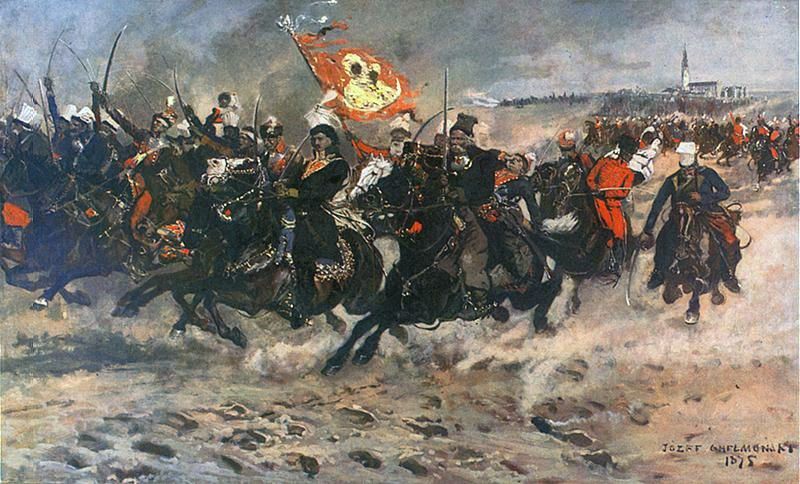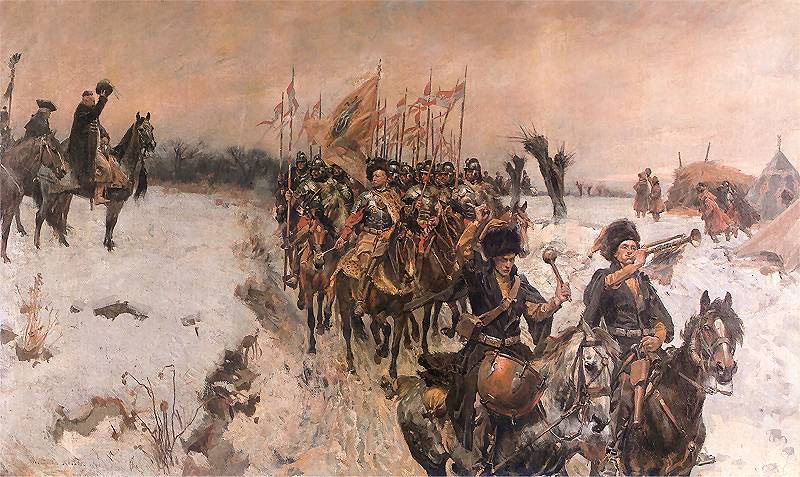|
Tadeusz Rejtan
Tadeusz Reytan (surname also alternatively spelled as ''Rejtan'', and rarely ''Reyten''; be, Тадэвуш Рэйтан; lt, Tadas Reitanas; 20 August 1742 – 8 August 1780) was a nobleman from the Polish–Lithuanian Commonwealth. He was a member of the Sejm of the Polish–Lithuanian Commonwealth from the Nowogródek Voivodeship. Reytan is remembered for a dramatic gesture he made in September 1773, as a deputy of the Partition Sejm. There, Reytan tried to prevent the legalization of the first partition of Poland, a scene that has been immortalized in the painting '' Rejtan'' by Jan Matejko. He has been the subject of many other art works, and is a symbol of patriotism in Lithuania, Belarus and Poland. Despite his efforts, the partition of Polish–Lithuanian Commonwealth was legalized soon afterwards. Biography Tadeusz Rejtan was born on 20 August 1742 in Hruszówka (now Lyakhavichy District of Belarus). [...More Info...] [...Related Items...] OR: [Wikipedia] [Google] [Baidu] |
Reytan Coat Of Arms
Tadeusz Reytan (surname also alternatively spelled as ''Rejtan'', and rarely ''Reyten''; be, Тадэвуш Рэйтан; lt, Tadas Reitanas; 20 August 1742 – 8 August 1780) was a nobleman from the Polish–Lithuanian Commonwealth. He was a member of the Sejm of the Polish–Lithuanian Commonwealth from the Nowogródek Voivodeship (1507–1795), Nowogródek Voivodeship. Reytan is remembered for a dramatic gesture he made in September 1773, as a deputy of the Partition Sejm. There, Reytan tried to prevent the legalization of the Partitions of Poland, first partition of Poland, a scene that has been immortalized in the painting ''Rejtan (painting), Rejtan'' by Jan Matejko. He has been the subject of many other art works, and is a symbol of patriotism in Lithuania, Belarus and Poland. Despite his efforts, the partition of Polish–Lithuanian Commonwealth was legalized soon afterwards. Biography Tadeusz Rejtan was born on 20 August 1742 in Hruszówka (now Lyakhavichy District of ... [...More Info...] [...Related Items...] OR: [Wikipedia] [Google] [Baidu] |
Offices In The Polish–Lithuanian Commonwealth
This article discusses the organizational and administrative structure of the Polish–Lithuanian Commonwealth. The Polish–Lithuanian Commonwealth was a confederative aristocratic republic of the period 1569–1795, comprising the Kingdom of Poland, the Grand Duchy of Lithuania and their fiefs. The Commonwealth was governed by the Parliament (Sejm) consisting of the King, the King-appointed Senate (Voivodes, Castellans, Ministers, Bishops) and the rest of hereditary nobility either in person or through the Lower Sejm (consisting of deputies representing their lands). The nobility's constitutional domination of the state made the King very weak and the commoners (burgesses and peasants) almost entirely unrepresented in the Commonwealth's political system. Classification The Commonwealth's administrative system was a pre-bureaucracy. In terms of Max Weber's tripartite classification of authority, it was, as with other contemporary monarchies, largely based on "traditional domina ... [...More Info...] [...Related Items...] OR: [Wikipedia] [Google] [Baidu] |
Samuel Korsak
Samuel ''Šəmūʾēl'', Tiberian: ''Šămūʾēl''; ar, شموئيل or صموئيل '; el, Σαμουήλ ''Samouḗl''; la, Samūēl is a figure who, in the narratives of the Hebrew Bible, plays a key role in the transition from the biblical judges to the United Kingdom of Israel under Saul, and again in the monarchy's transition from Saul to David. He is venerated as a prophet in Judaism, Christianity, and Islam. In addition to his role in the Hebrew scriptures, Samuel is mentioned in Jewish rabbinical literature, in the Christian New Testament, and in the second chapter of the Quran (although Islamic texts do not mention him by name). He is also treated in the fifth through seventh books of ''Antiquities of the Jews'', written by the Jewish scholar Josephus in the first century. He is first called "the Seer" in 1 Samuel 9:9. Biblical account Family Samuel's mother was Hannah and his father was Elkanah. Elkanah lived at Ramathaim in the district of Zuph. His genealog ... [...More Info...] [...Related Items...] OR: [Wikipedia] [Google] [Baidu] |
Stanisław Bohuszewicz
Stanislav and variants may refer to: People *Stanislav (given name), a Slavic given name with many spelling variations (Stanislaus, Stanislas, Stanisław, etc.) Places * Stanislav, a coastal village in Kherson, Ukraine * Stanislaus County, California * Stanislaus River, California * Stanislaus National Forest, California * Place Stanislas, a square in Nancy, France, World Heritage Site of UNESCO * Saint-Stanislas, Mauricie, Quebec, a Canadian municipality * Stanizlav, a fictional train depot in the game '' TimeSplitters: Future Perfect'' * Stanislau, German name of Ivano-Frankivsk, Ukraine Schools * St. Stanislaus High School, an institution in Bandra, Mumbai, India * St. Stanislaus High School (Detroit) * Collège Stanislas de Paris, an institution in Paris, France * California State University, Stanislaus, a public university in Turlock, CA * St Stanislaus College (Bathurst), a secondary school in Bathurst, Australia * St. Stanislaus College (Guyana), a secondary school in ... [...More Info...] [...Related Items...] OR: [Wikipedia] [Google] [Baidu] |
Sejmik
A sejmik (, diminutive of ''sejm'', occasionally translated as a ''dietine''; lt, seimelis) was one of various local parliaments in the history of Poland and history of Lithuania. The first sejmiks were regional assemblies in the Kingdom of Poland (before 1572), though they gained significantly more influence in the later era of the Polish–Lithuanian Commonwealth (18th century). Sejmiks arose around the late 14th and early 15th centuries and existed until the end of the Commonwealth in 1795, following the partitions of the Commonwealth. In a limited form, some sejmiks existed in partitioned Poland (1795–1918), and later in the Second Polish Republic (1918–1939). In modern Poland, since 1999, the term has revived with the ''voivodeship sejmiks'' (''sejmiki województwa''), referring to the elected councils of each of the 16 voivodeships. The competencies of sejmiks varied over time, and there were also geographical differences. Often, numerous different types of sejmiks co ... [...More Info...] [...Related Items...] OR: [Wikipedia] [Google] [Baidu] |
Otto Magnus Von Stackelberg (ambassador)
Reichsgraf Otto Magnus von Stackelberg (1736–1800) was a diplomat of the Russian Empire. He served as an envoy in Madrid from 1767 to 1771, ambassador in the Polish–Lithuanian Commonwealth from 1772 to 1790 and in Sweden from 1791 to 1793. Biography In his early career, he served as an envoy in Madrid from 1767 to 1771. After the treaty of the First Partition of Poland, signed in February, was made public on 5 August 1772, Otto Magnus von Stackelberg became the new ambassador to Poland. During his stay in Warsaw, due to the Russian Empire's influence in the Commonwealth, he was almost the ''de facto'' ruler of Poland in the name of Empress Catherine II who became a protectress of this country. He governed Poland by Permanent Council, which became an instrument of Russian surveillance over the Commonwealth. Stackleberg had enormous influence in the Commonwealth, according to many historians, equal or bypassing the king. He has been described as ruling the Commonwealth, f ... [...More Info...] [...Related Items...] OR: [Wikipedia] [Google] [Baidu] |
Prussia
Prussia, , Old Prussian: ''Prūsa'' or ''Prūsija'' was a German state on the southeast coast of the Baltic Sea. It formed the German Empire under Prussian rule when it united the German states in 1871. It was ''de facto'' dissolved by an emergency decree transferring powers of the Prussian government to German Chancellor Franz von Papen in 1932 and ''de jure'' by an Allied decree in 1947. For centuries, the House of Hohenzollern ruled Prussia, expanding its size with the Prussian Army. Prussia, with its capital at Königsberg and then, when it became the Kingdom of Prussia in 1701, Berlin, decisively shaped the history of Germany. In 1871, Prussian Minister-President Otto von Bismarck united most German principalities into the German Empire under his leadership, although this was considered to be a "Lesser Germany" because Austria and Switzerland were not included. In November 1918, the monarchies were abolished and the nobility lost its political power during the Ger ... [...More Info...] [...Related Items...] OR: [Wikipedia] [Google] [Baidu] |
Russian Empire
The Russian Empire was an empire and the final period of the Russian monarchy from 1721 to 1917, ruling across large parts of Eurasia. It succeeded the Tsardom of Russia following the Treaty of Nystad, which ended the Great Northern War. The rise of the Russian Empire coincided with the decline of neighbouring rival powers: the Swedish Empire, the Polish–Lithuanian Commonwealth, Qajar Iran, the Ottoman Empire, and Qing China. It also held colonies in North America between 1799 and 1867. Covering an area of approximately , it remains the third-largest empire in history, surpassed only by the British Empire and the Mongol Empire; it ruled over a population of 125.6 million people per the 1897 Russian census, which was the only census carried out during the entire imperial period. Owing to its geographic extent across three continents at its peak, it featured great ethnic, linguistic, religious, and economic diversity. From the 10th–17th centuries, the land ... [...More Info...] [...Related Items...] OR: [Wikipedia] [Google] [Baidu] |
Warsaw
Warsaw ( pl, Warszawa, ), officially the Capital City of Warsaw,, abbreviation: ''m.st. Warszawa'' is the capital and largest city of Poland. The metropolis stands on the River Vistula in east-central Poland, and its population is officially estimated at 1.86 million residents within a greater metropolitan area of 3.1 million residents, which makes Warsaw the 7th most-populous city in the European Union. The city area measures and comprises 18 districts, while the metropolitan area covers . Warsaw is an Alpha global city, a major cultural, political and economic hub, and the country's seat of government. Warsaw traces its origins to a small fishing town in Masovia. The city rose to prominence in the late 16th century, when Sigismund III decided to move the Polish capital and his royal court from Kraków. Warsaw served as the de facto capital of the Polish–Lithuanian Commonwealth until 1795, and subsequently as the seat of Napoleon's Duchy of Warsaw. Th ... [...More Info...] [...Related Items...] OR: [Wikipedia] [Google] [Baidu] |
Bar Confederation
The Bar Confederation ( pl, Konfederacja barska; 1768–1772) was an association of Polish nobles (szlachta) formed at the fortress of Bar in Podolia (now part of Ukraine) in 1768 to defend the internal and external independence of the Polish–Lithuanian Commonwealth against Russian influence and against King Stanislaus II Augustus with Polish reformers, who were attempting to limit the power of the Commonwealth's wealthy magnates. The founders of the Bar Confederation included the magnates Adam Stanisław Krasiński, Bishop of Kamieniec, Karol Stanisław Radziwiłł, Casimir Pulaski, his father and brothers and Michał Krasiński. Its creation led to a civil war and contributed to the First Partition of the Polish–Lithuanian Commonwealth. Maurice Benyovszky was the best known European Bar Confederation volunteer, supported by Roman Catholic France and Austria. Some historians consider the Bar Confederation the first Polish uprising. Background Abroad At the end ... [...More Info...] [...Related Items...] OR: [Wikipedia] [Google] [Baidu] |
Banner (cavalry)
Chorągiew (; literally: "banner") was the basic administrative unit of the Polish and Lithuanian cavalry from the 14th century. An alternative name until the 17th century was '' Rota''. 14th to 17th centuries Between the 14th and 17th century the ''Chorągiew'' was composed of smaller sub-units – the ''Poczet''. Types of ''Chorągiew'' were: * Chorągiew ziemska (District banner), formed by knights of a district. * Chorągiew rodowa (Clan banner), formed by clans. * Chorągiew nadworna (Court banner), formed by troops of the King. 15th century (2nd half) to 18th century (1st half) In the cavalry, since the second half of the 15th century until the first half of the 18th century, a ''Chorągiew'' was formed according to the "companion system" (system zaciągu towarzyskiego). See: '' Towarzysz'' (companion). Types of ''Chorągiew'' were: * Chorągiew husarska (Hussar banner), formed by Hussars. * Chorągiew lekka ("Light" banner), formed by light-cavalry. * Chorągiew pan ... [...More Info...] [...Related Items...] OR: [Wikipedia] [Google] [Baidu] |

_-_02.png)


